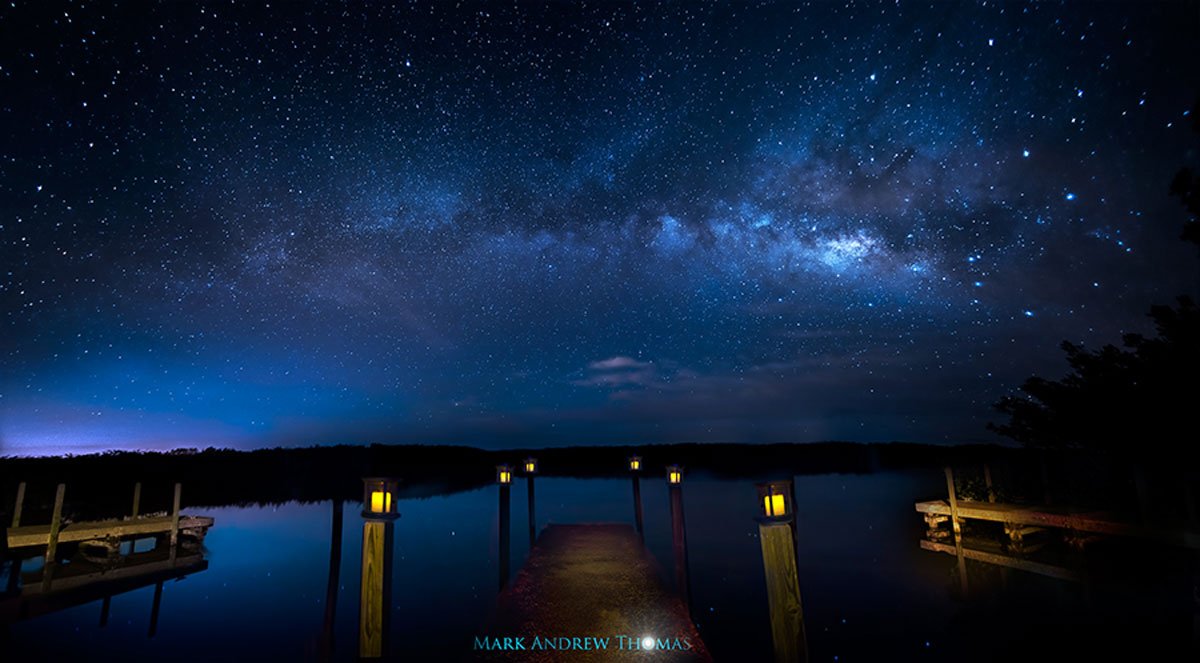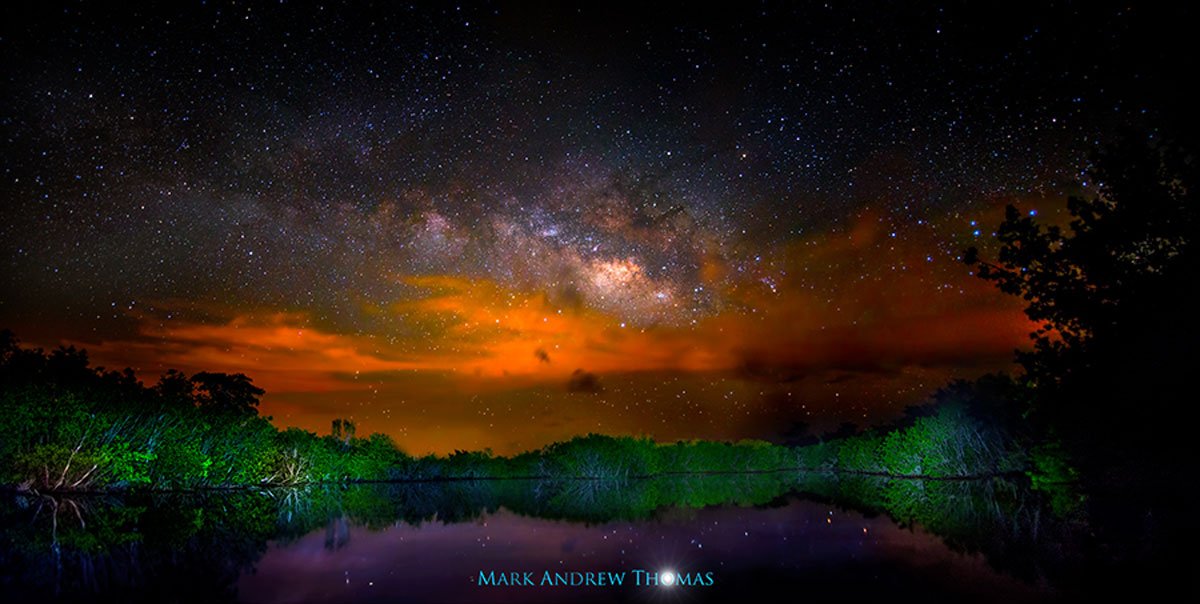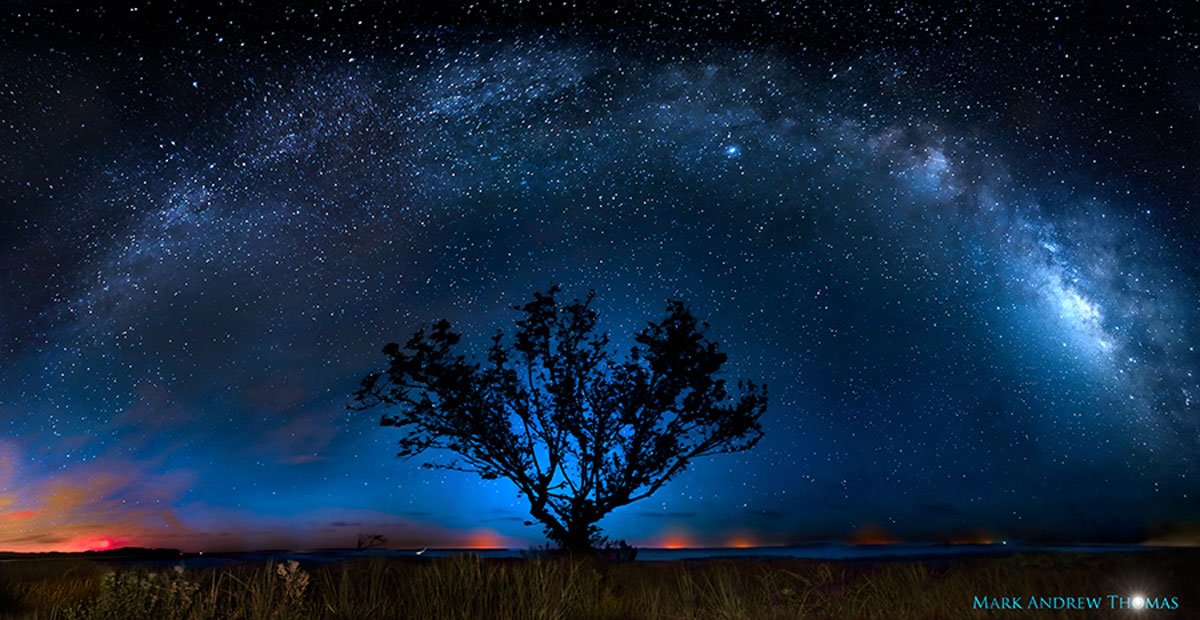Photographer, Mark Andrew Thomas, shares his tips for capturing the Milky Way.

Dark Sky Island
Another large panorama requiring multiple exposures was used for this shot. I also brought along some solar powered lanterns as props. Ya gotta be creative!

Milky Way Fire
A controlled burn in Everglades National Park made for a dramatic Milky Way landscape in this panorama.

Galactica
12 vertical exposures were used to photograph this huge panorama of the Milky Way which shows the full arc.

Way of Birds
A Great White Egret flew in and landed at the water’s edge during this shoot. I flipped on my high powered LED and illuminated the egret for 3 seconds. Fun (and amazing) fact: Birds use the Milky Way for navigation so I felt it was a fitting title.
This is a guest post by photographer, Mark Andrew Thomas. Mark is a photographer and filmmaker based in Ft. Lauderdale. As well as ADAPT Network, Mark has also been featured on Science Channel, Animal Planet, and National Geographic. Check out his website for the latest.
For a photographer, capturing the Milky Way is one of the most rewarding aspects of photography. The night sky has fascinated mankind since the dawn of time and continues to do so today. The Milky Way is our home, after all, and seeing even the small portion that we are able to see is endlessly fascinating. The Milky Way can be seen with the naked eye, but in order to do so, you need to get as far from city lights and light pollution as possible.
For photographers, photographing the Milky Way is challenging, but not as difficult as many might think. You will need a tripod and preferably a remote timer to avoid touching your camera and creating motion blur. Even the act of pressing the shutter release, and the mirror going up, can create a slight blur and ruin an otherwise great image. To avoid this use a remote timer and set your camera to Mirror Lockup mode. You’ll need to press the shutter release twice. The first shutter release trigger will bring the mirror up and the second will take the exposure with no vibration.
Exposures of 15-30 seconds are usually required for Milky Way shots along with a high ISO. I use a full frame camera which lets in more light and ISO 4000 in most scenarios. This combined with a 25 second exposure at F/2.8 using a 16mm lens usually does the trick although I’ve achieved great results with a F/3.5 24mm Tilt-Shift lens.
Please follow me on my blog @benadapt if you enjoy my topics and content. I will also follow back so that we can build a community together.
